Today, the age of information in physical form is waning. This means the book’s intended function as an object has decreased. Artists employ the book as a sculptural medium and alter its physical form, finding for it new and unexpected roles.
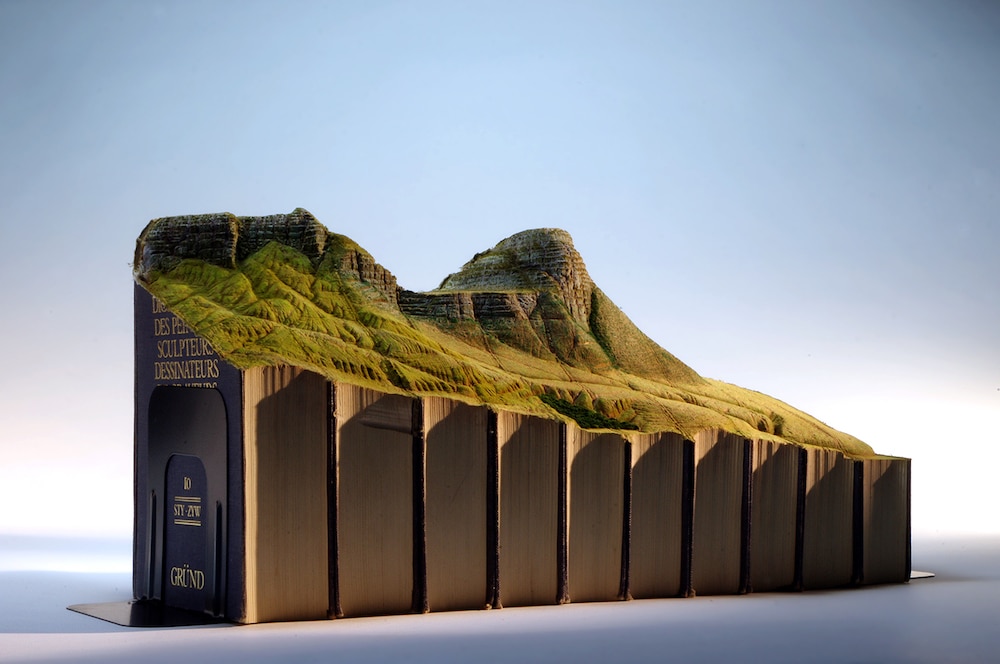
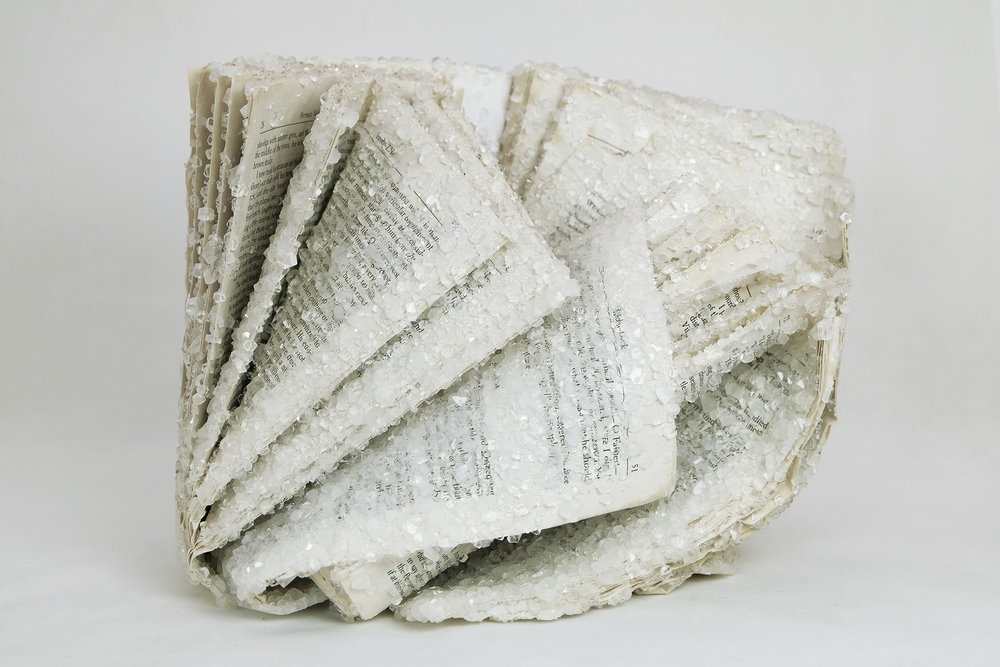
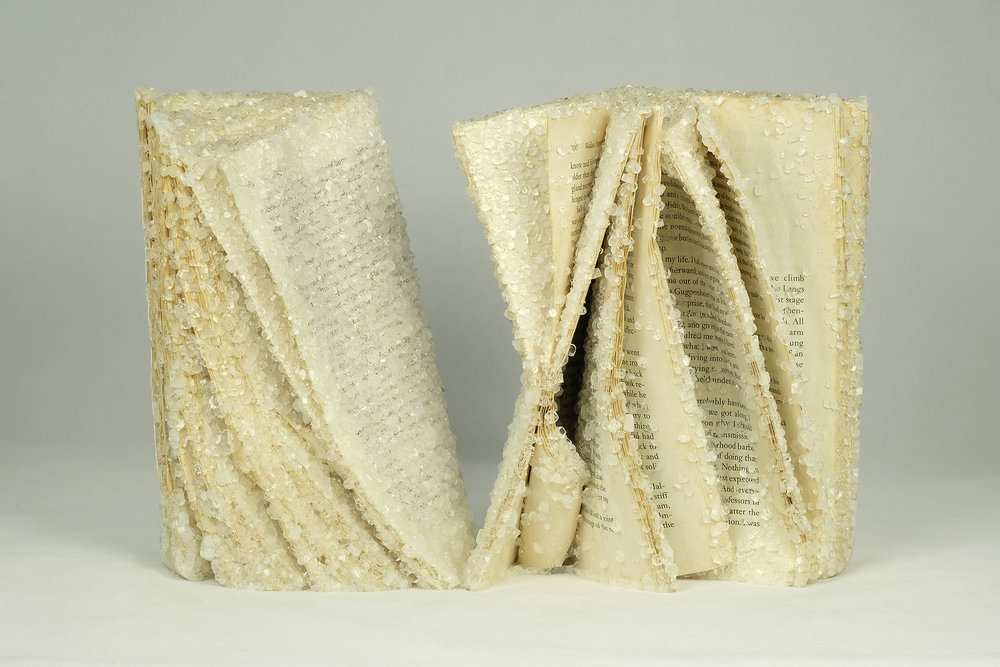
Crystallized Book Series by Alexis Arnold
In her Crystallized Book Series San Francisco based artist Alexis Arnold addresses the materiality versus the text or content of a book. The artist collects discarded books on the streets and turns them into crystalized non-functional objects. The books are manipulated with water and then frozen with crystal growth.
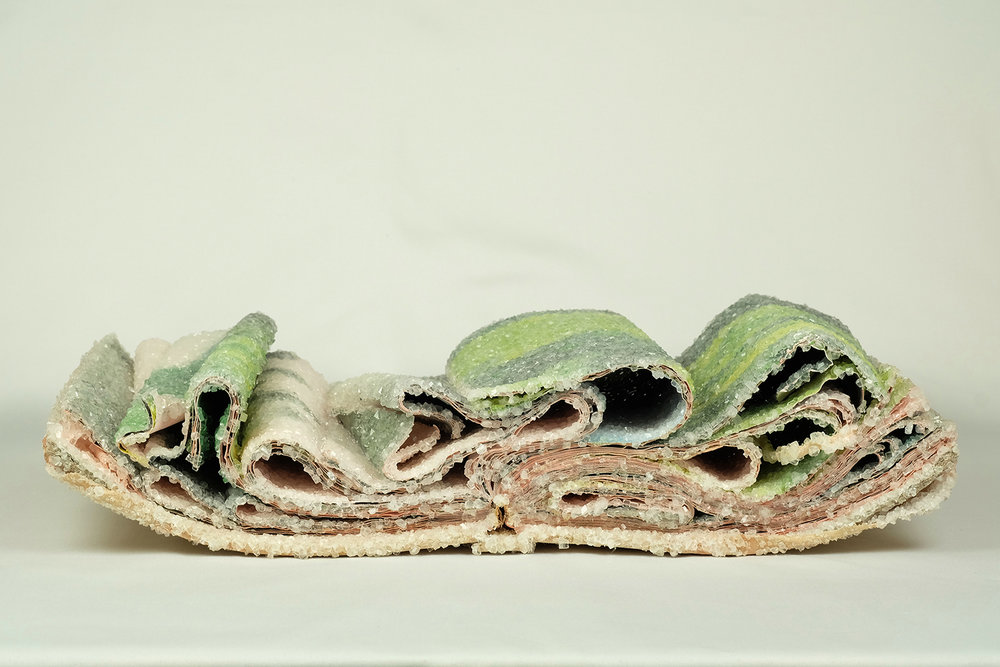

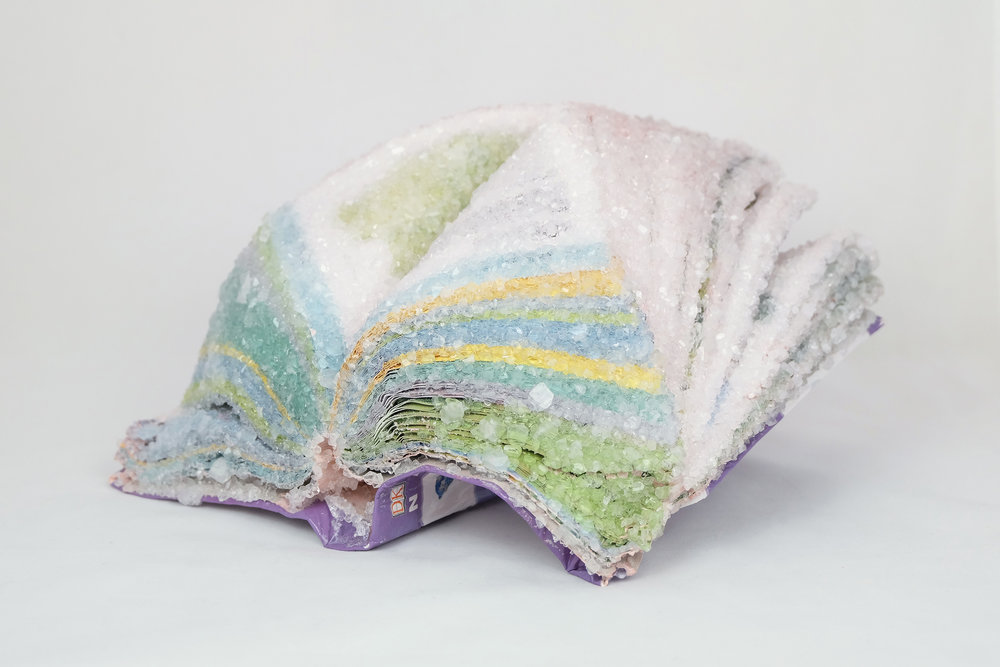
Crystallized Book Series by Alexis Arnold
As the crystals visually remove the text and solidify the books into aesthetic objects, they become artifacts or geologic specimens imbued with the history of time, use, and memory. The books appear frozen in motion, with the structure of the pages highlighted by water crystals. The crystals also provide an illusion for movement and sense of life to the books under different lighting.
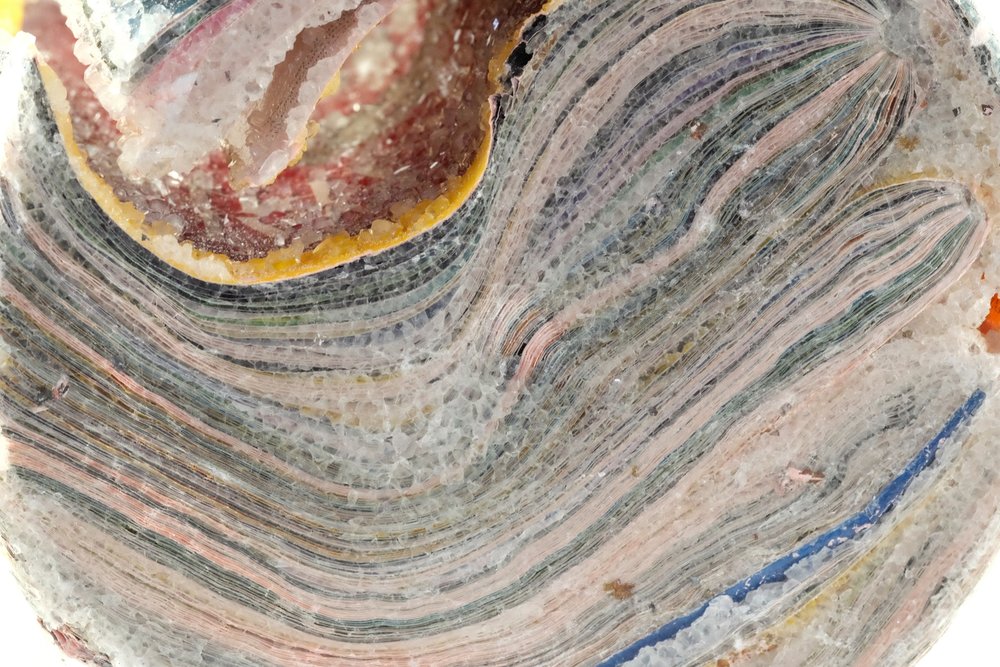
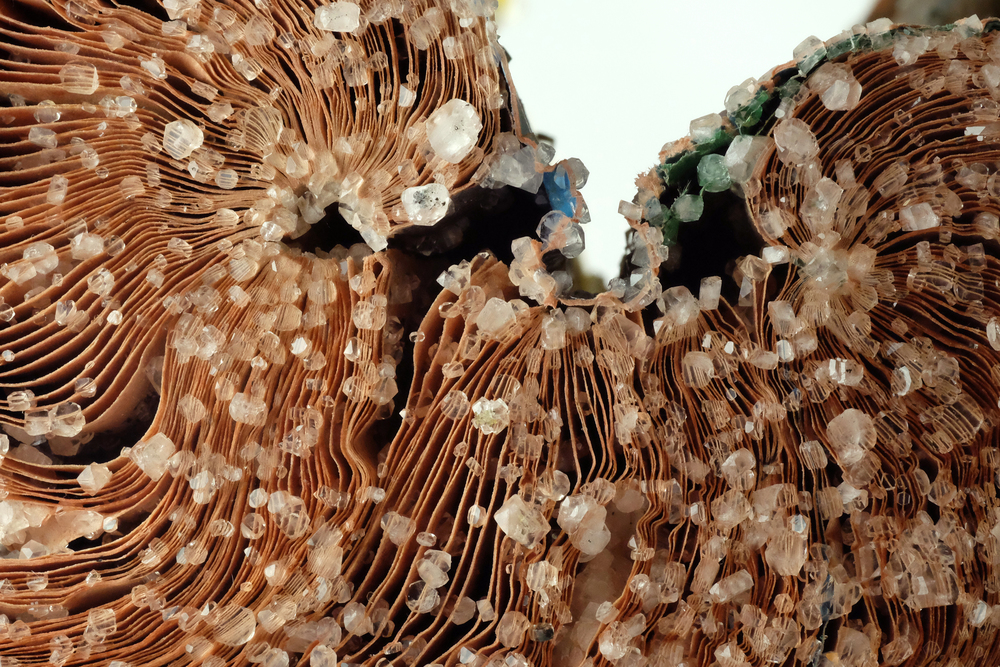
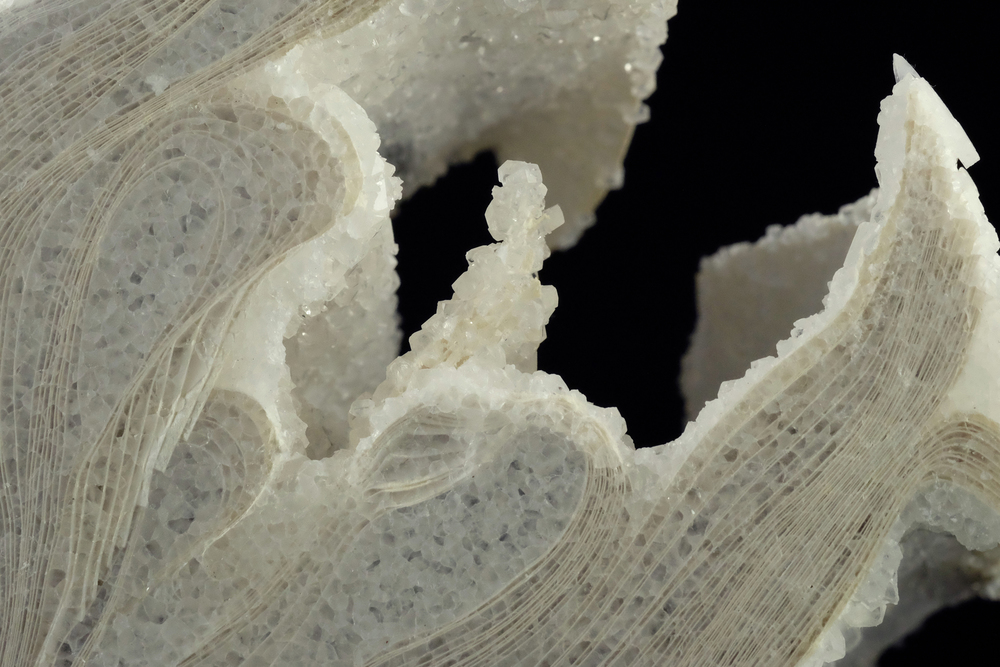
Crystallized Book Series by Alexis Arnold
According to Arnold, she creates her artworks to ‘provide moments of individual interaction and perception, transform the recognizable, and highlight the aesthetic of the materials and subjects.’
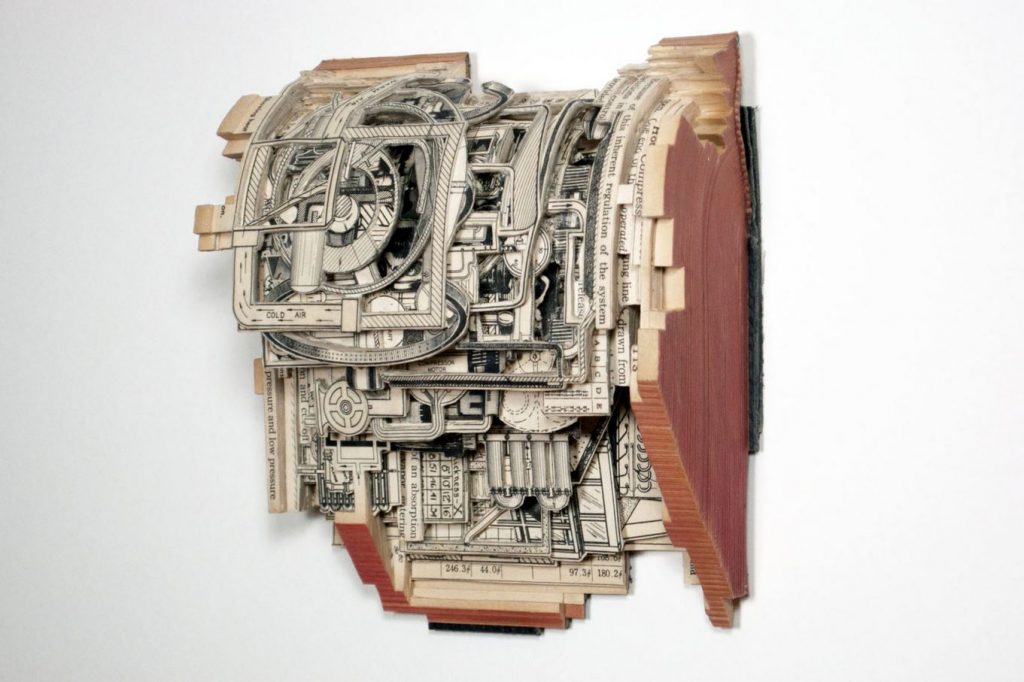
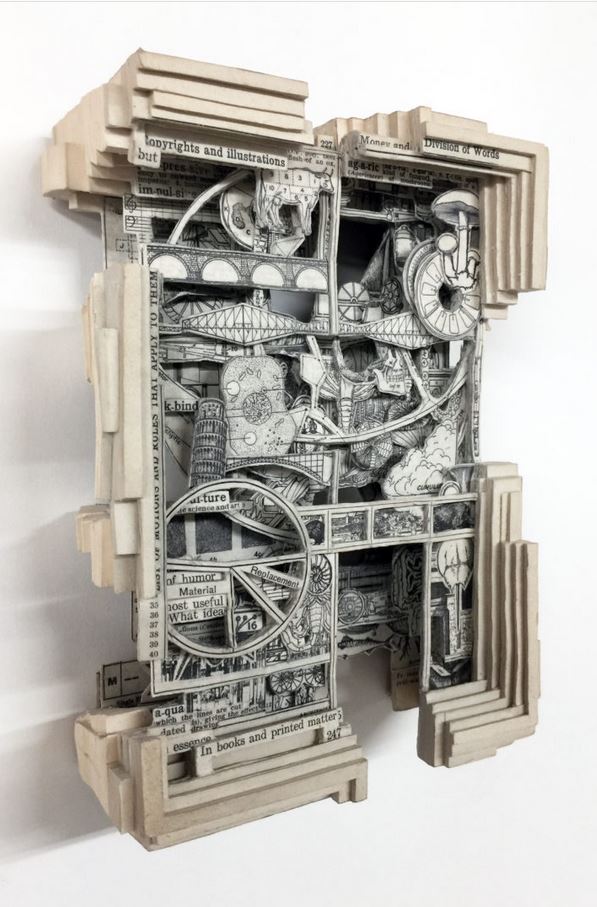
Book sculptures by Brian Dettmer
Contemporary artist Brian Dettmer from Atlanta, USA, creates incredible sculptures from old books. Using knives, tweezers and surgical tools, the artist cuts into the surface of books dissecting through them from the front. He then meticulously exposes various layers, carving one page at a time, to create his amazing artwork.
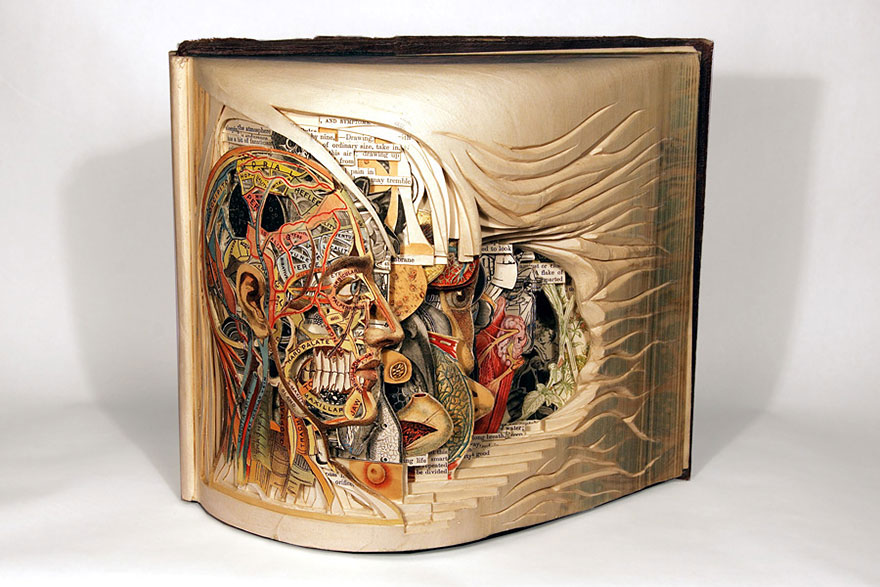
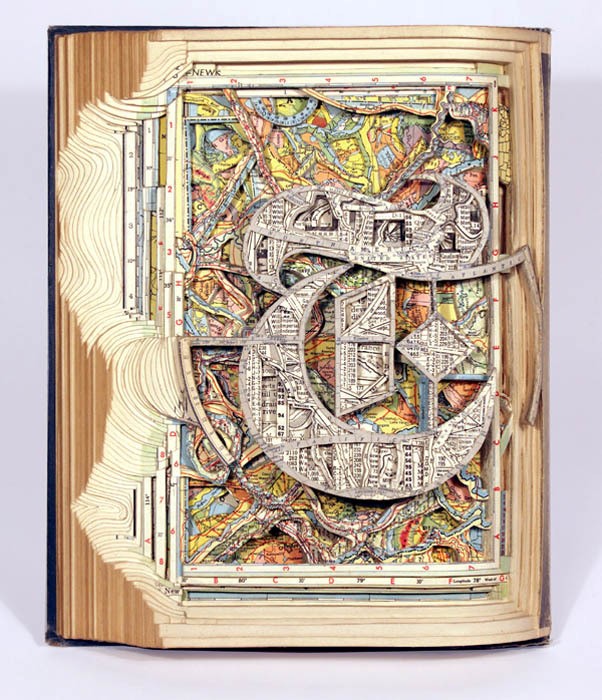
Book sculptures by Brian Dettmer
According to Dettmer, he edits communicative objects or systems such as books, maps, tapes and other media to transform the role of these media, creating new interpretations for their context. As the artist’s aim is to collaborate with the existing material and its past creators, nothing is relocated or implanted during the cutting process.
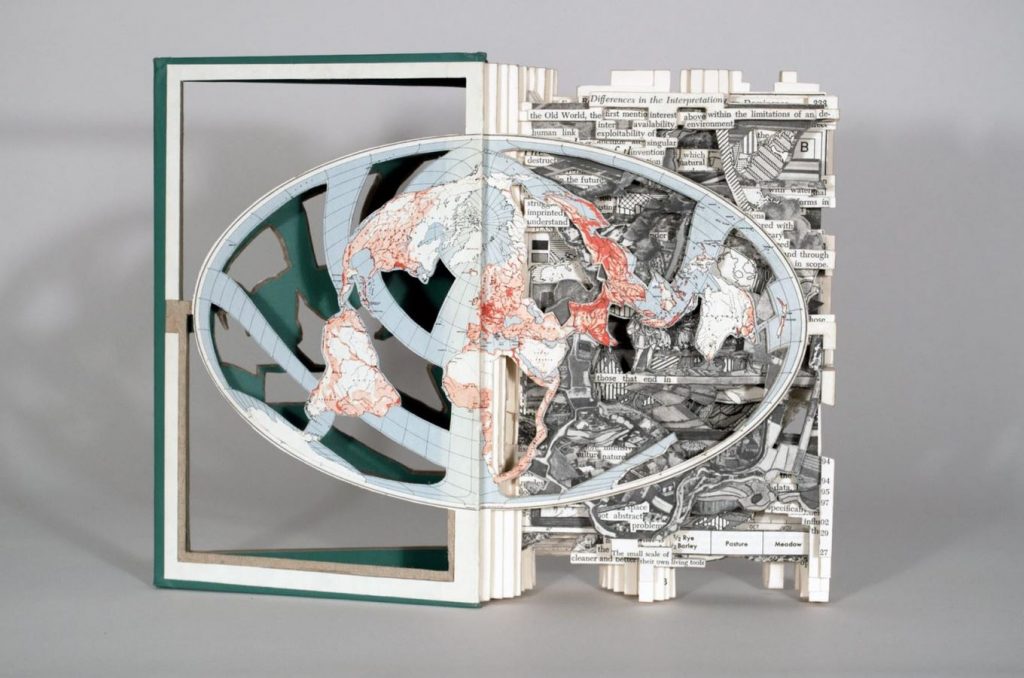
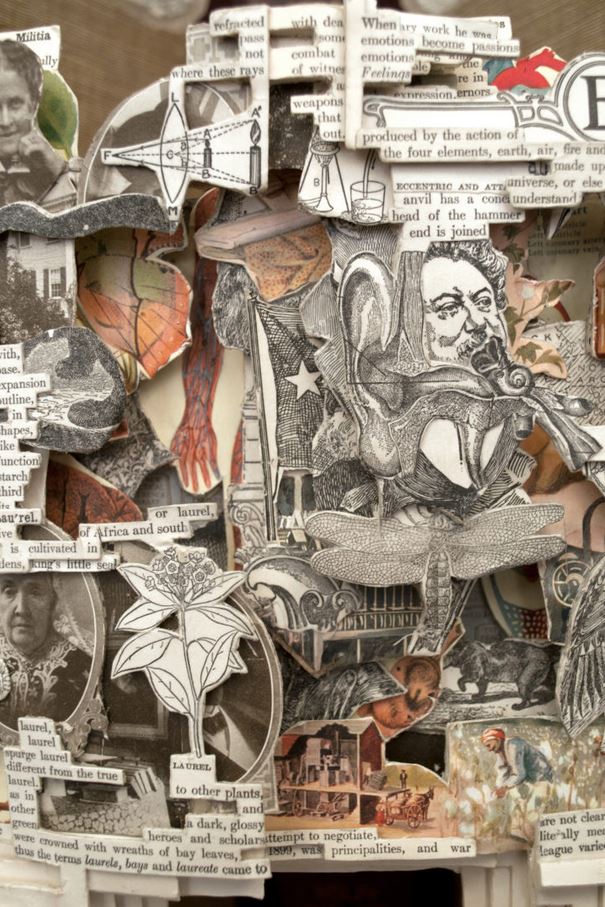
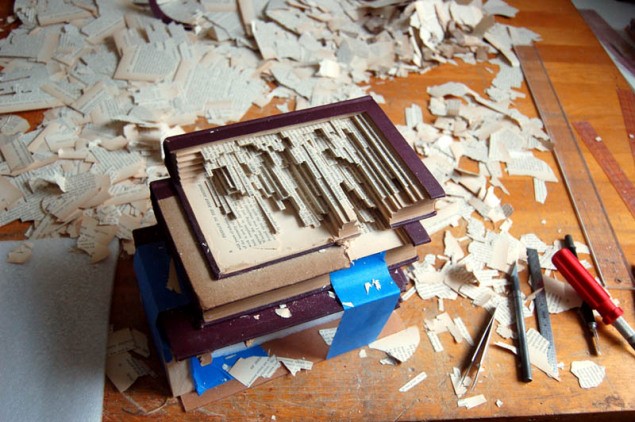
Book sculptures by Brian Dettmer
All completed artworks expose new relationships with the book’s contents and internal elements “exactly where they have been since their original conception.”
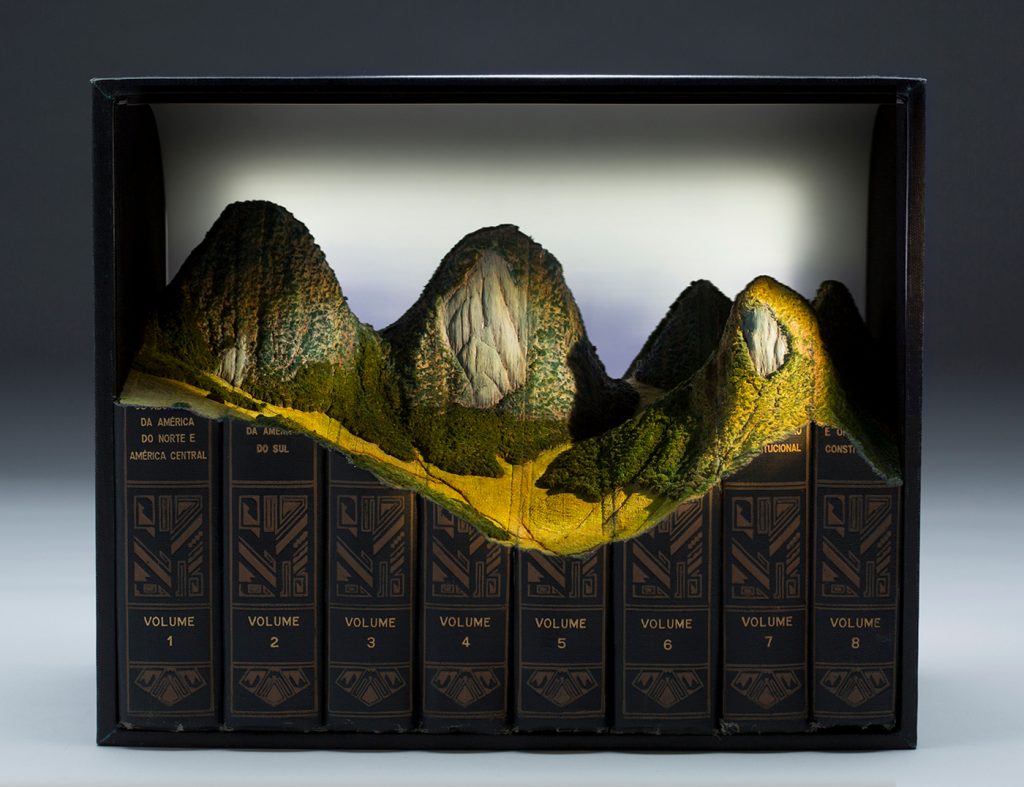
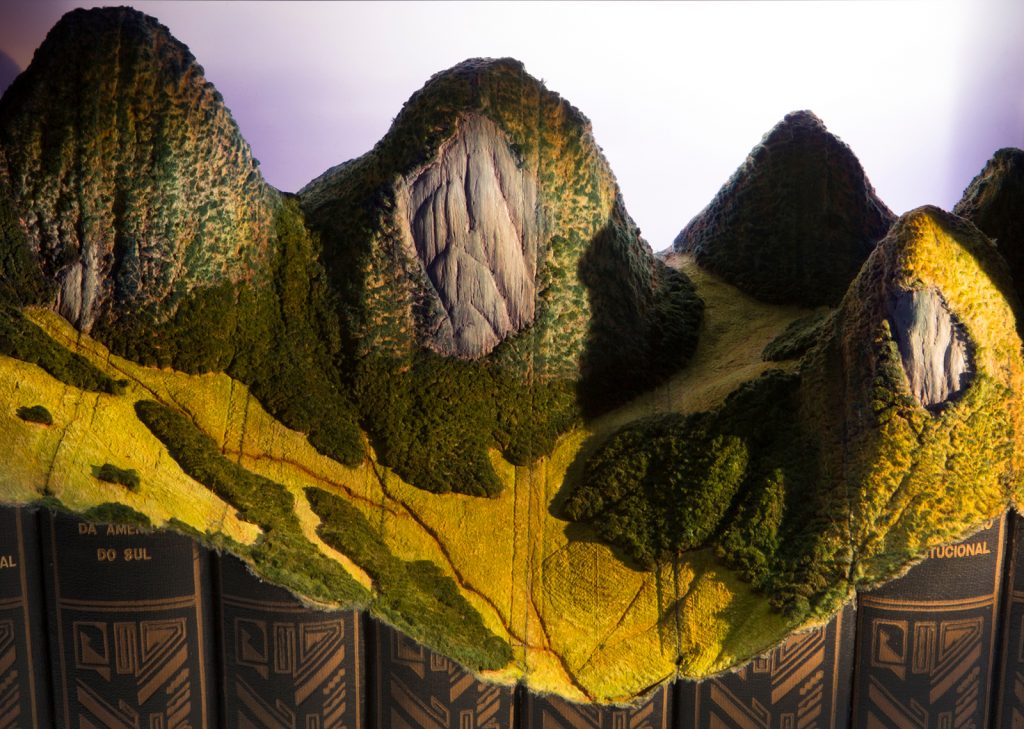
Book landscapes by Guy Laramee (also header image)
Canadian artist Guy Laramee creates mind-blowing landscapes employing repurposed books as a sculptural medium. One of his favorite mediums are bound stacks of old dictionaries and encyclopedias which he carves using a method of sandblasting. To the resulting dramatic representations of natural landscapes, he later applies oil paints, inks, pigments and dry pastels, crayon, adhesives, and beeswax.
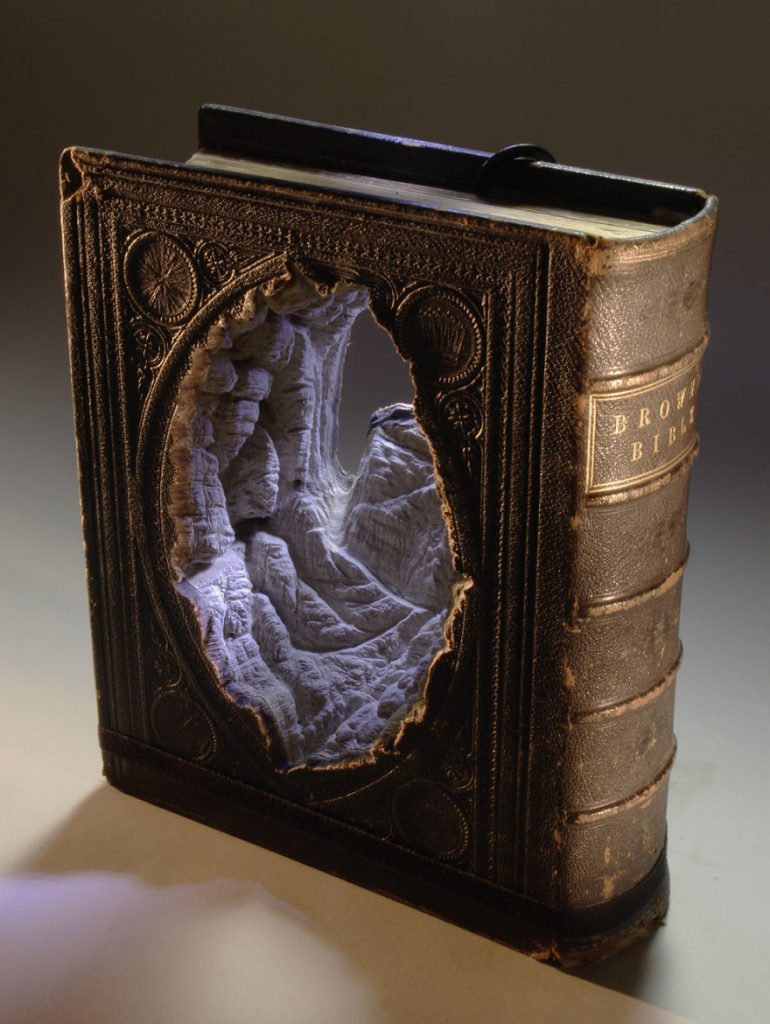
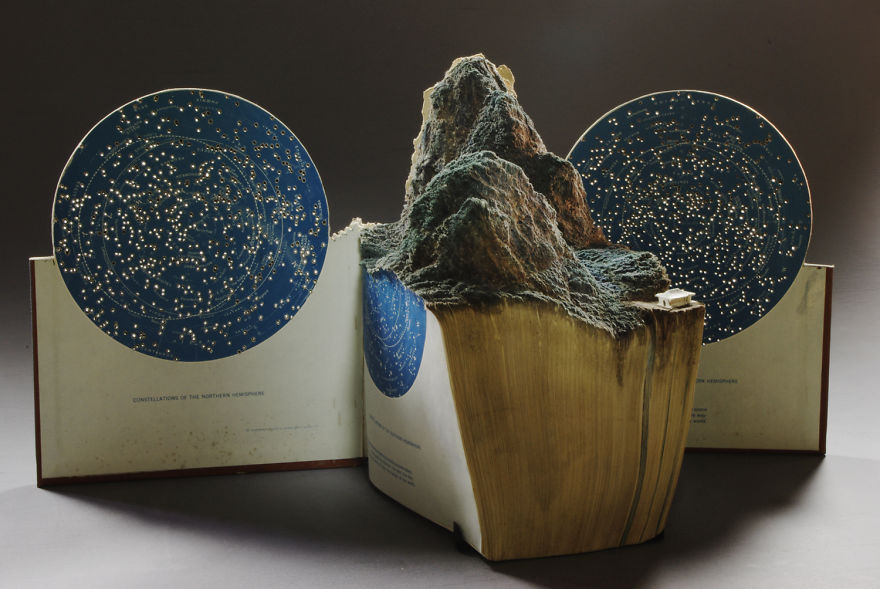
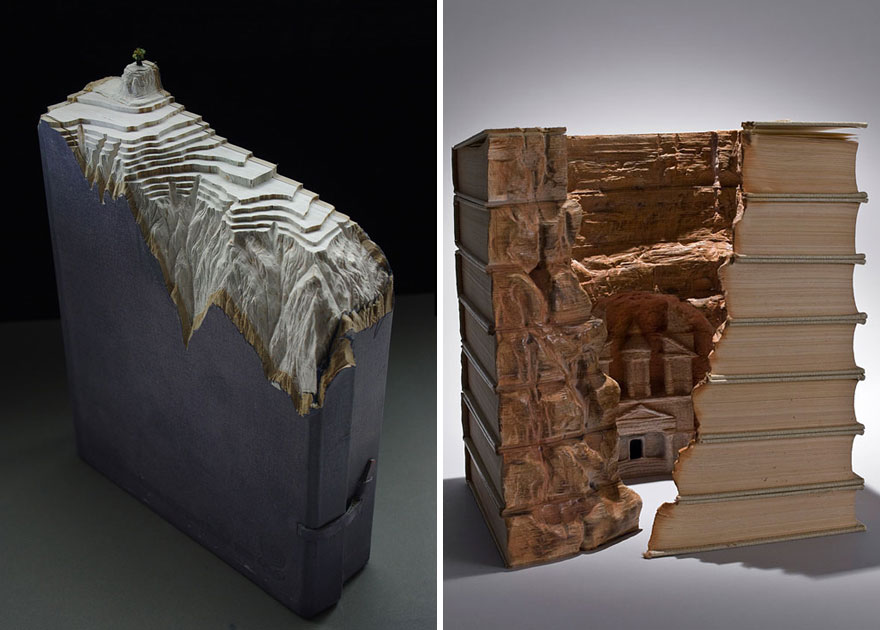
Book landscapes by Guy Laramee
Laramée meticulously chisels every detail as he carves the realistic environments into bound book pages. The completed pieces depict climatic canyons, plateaus, cavernous hollows, and dense vegetation. When photographed up close, his works look very much like aerial or satellite topographies of Earth.
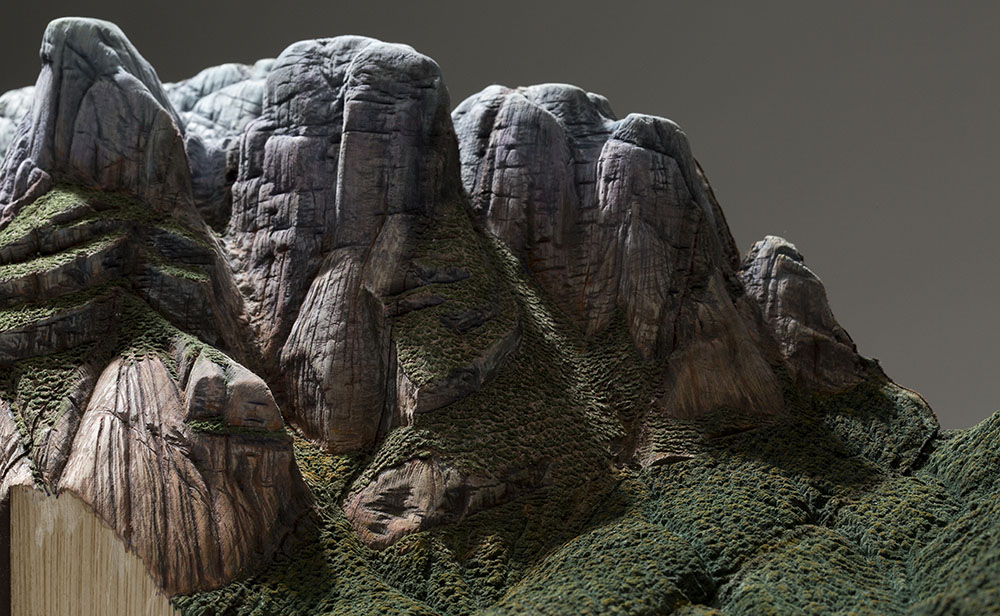
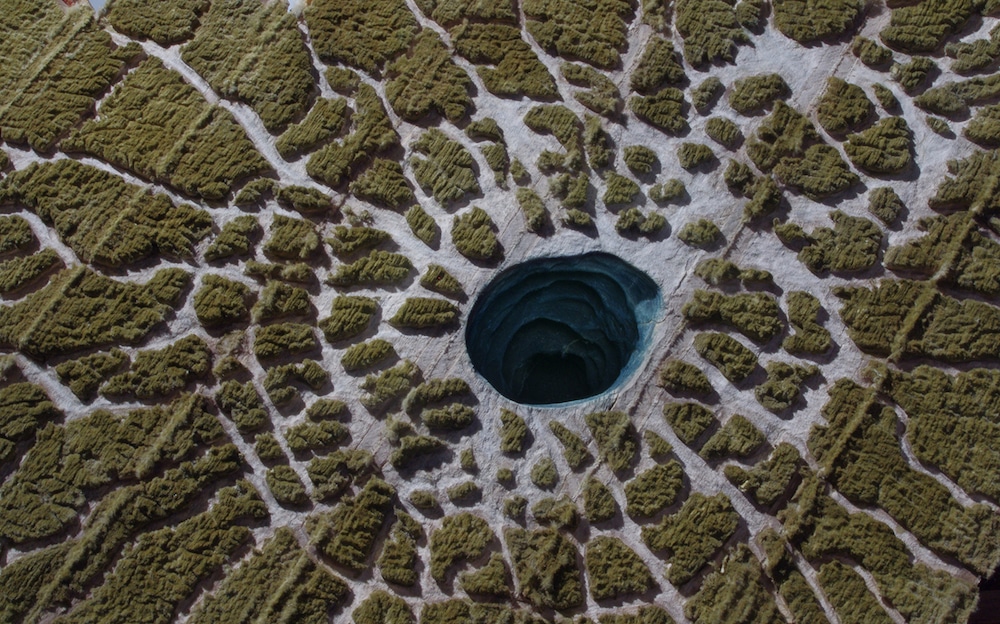
Book landscapes by Guy Laramee
Apart from that, Laramee’s symbolic sculptures portray a loss of information, both in a literal and metaphorical sense.


Book sculptures by Odires Mlászho (via designboom)
Born José Odires Micowski, São Paulo-based artist Odires Mlászho has created book sculptures that convey his attempt to reinvent the possibilities of collage in our digital world. They encompass book volumes arranged in such a way that they are rendered in twisting formations, worked into one another, referring to principles associated with a Möbius strip.


Book sculptures by Odires Mlászho (via designboom)
With his work, the artist shows that after destruction objects can be re-created and reused in a totally different way.


Book sculptures by Odires Mlászho (via designboom)